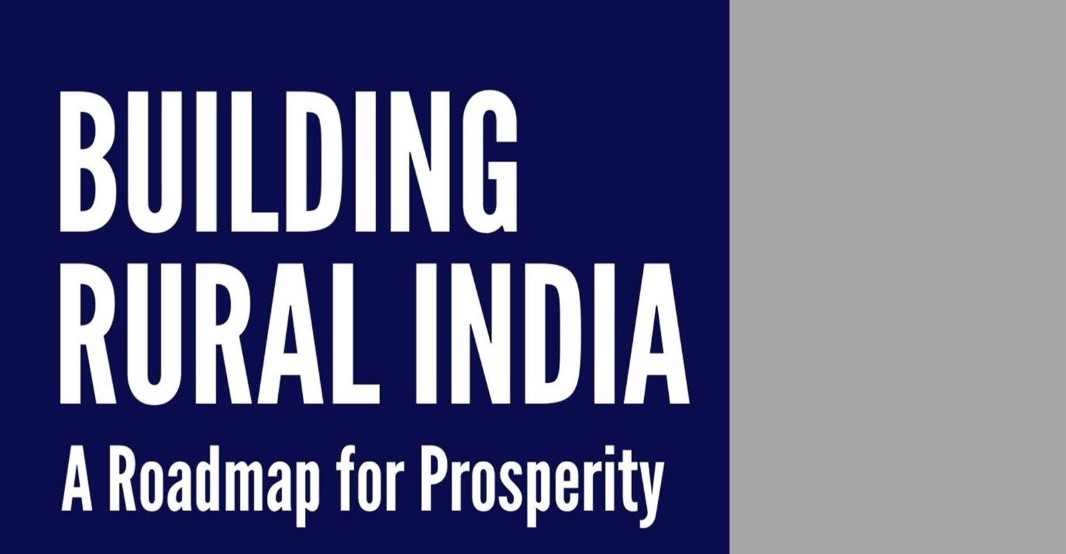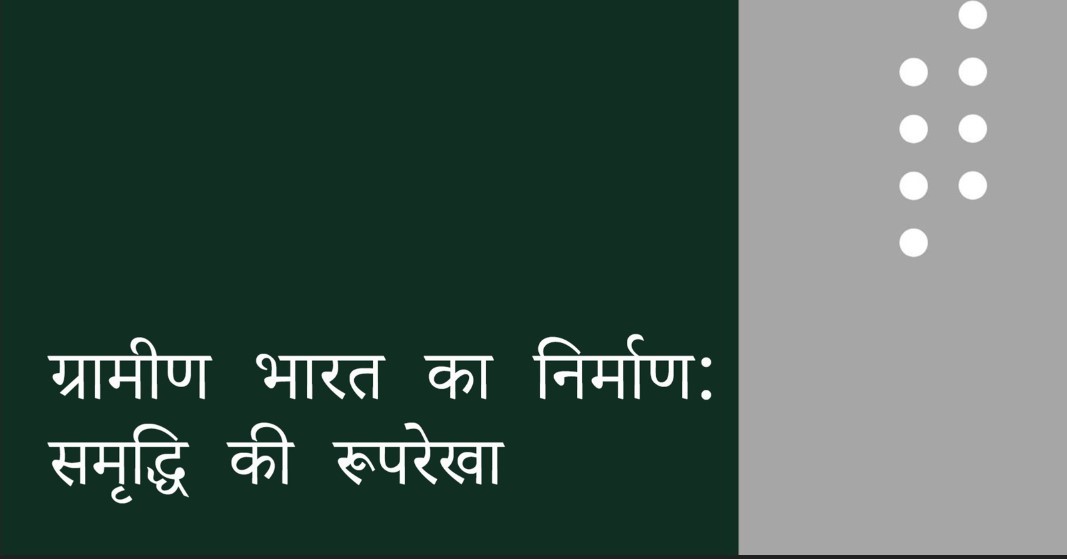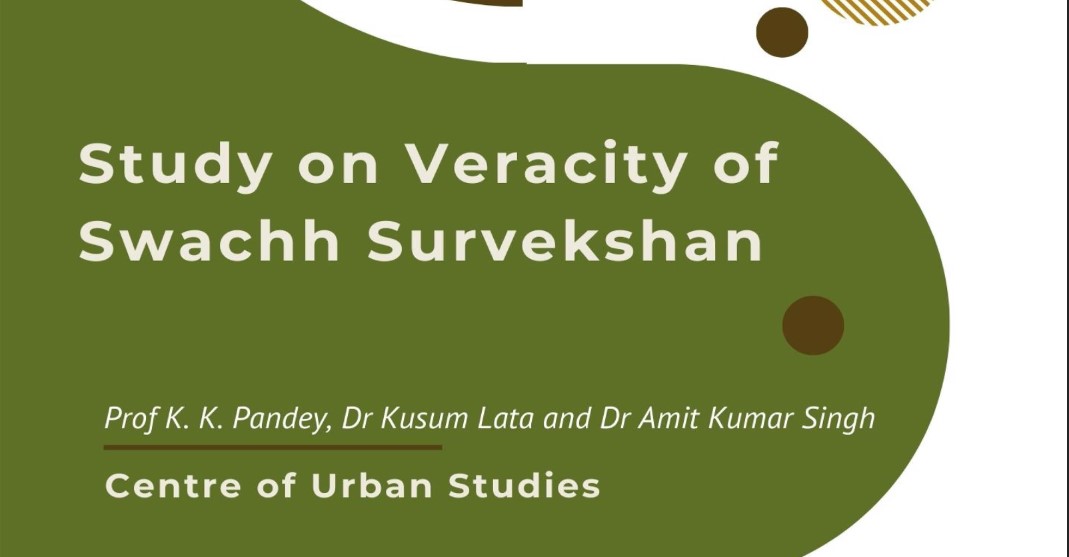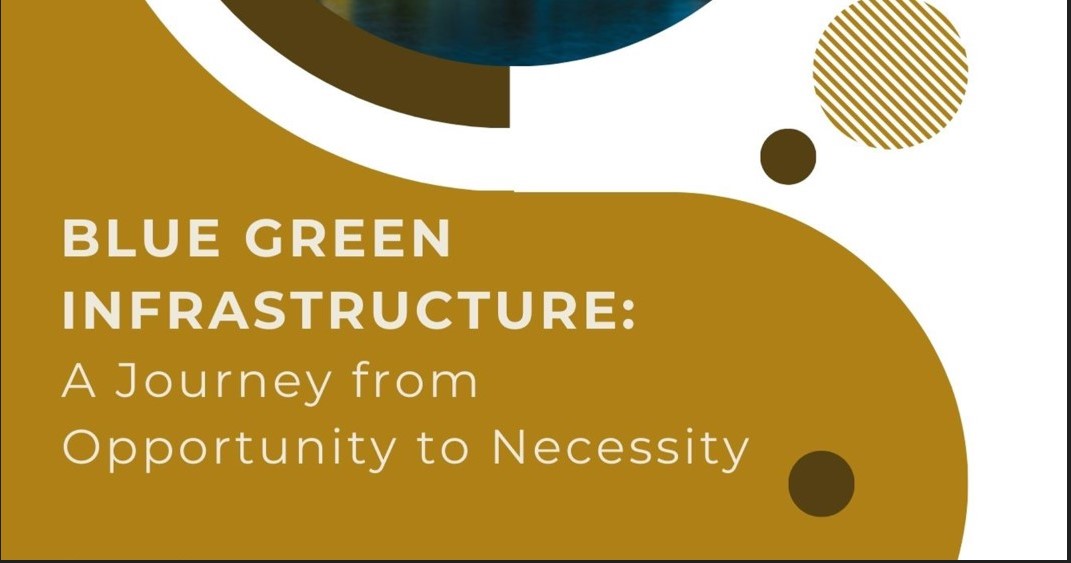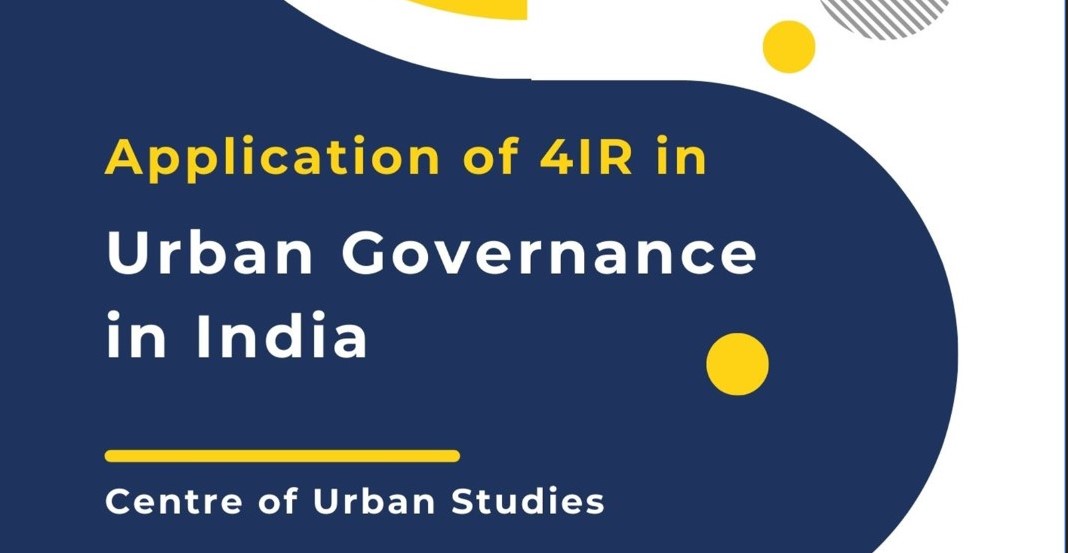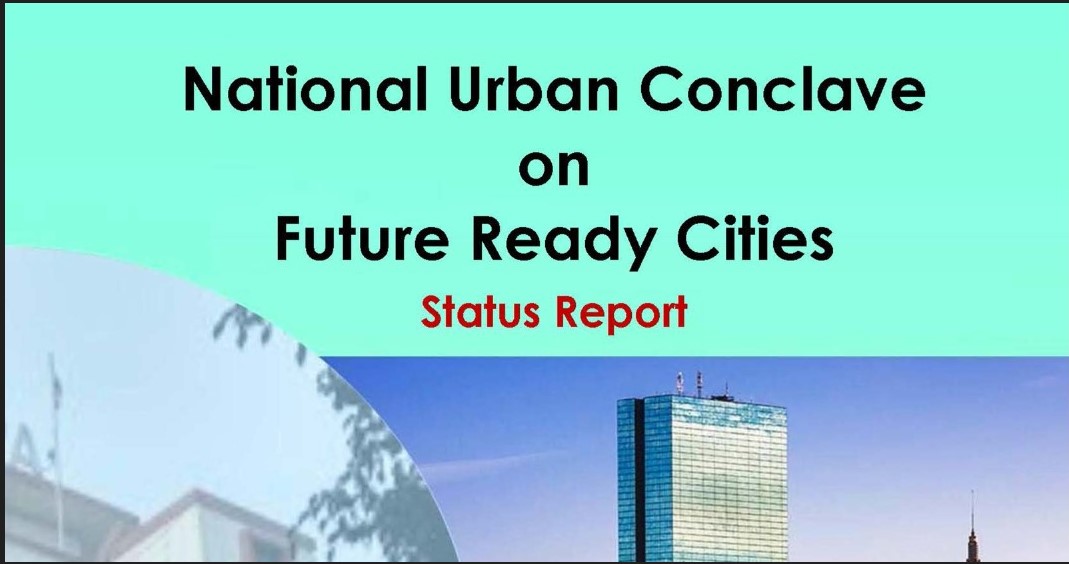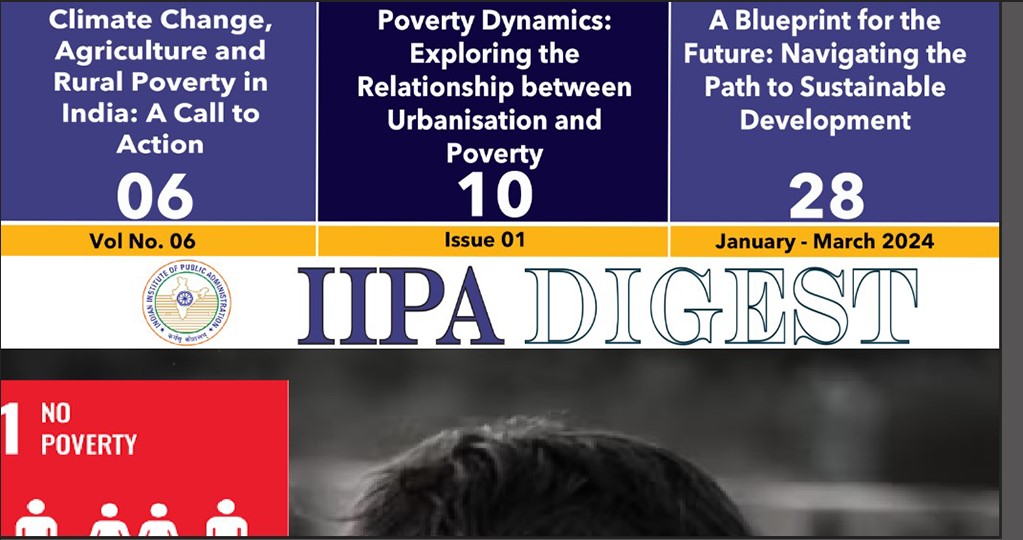Skilling for the 21st Century: Rethinking Rural Skill Development
Abstract
Skilling is the motherboard of development in the 21st century. The motherboard needs to be calibrated well to improve quantity and quality in jobs. Navigating employability in rural India requires proper differentiation between existing skills and skills in demand. Only proper rethinking on skilling ecosystem can create a dashboard of opportunity for rural youth. In fact, skills connote a sector that is both intrinsically and instrumentally significant. It increases efficiency in human capital and productivity as the growth driver. It also ascertains growth process by obtaining better job opportunities. Skilling is also intrinsically valuable because it enhances labor capabilities and empowerment in multiple spheres of life even beyond jobs and income. To catalyze the social development of our country, skill development is the prerequisite for meaningful productive engagements. The growing number of young people with aspirations to have a better hold on to the quality of life has always been a crucial concern. In juxtaposition, land as an instrumental resource is shrinking in size and the option warranted is to have a second string to one’s bow. Skilling comes as a prerequisite to act as an alternative to getting into meaningful employment engagements. However, the skilling world requires a strategic framework to be consistent with the process of mobilization, enrolment, training, assessment, and placement. Also, entry to skilling world requires eagerness and enthusiasm to enter. The skilling is prescribed to be conducted in alignment with the National Skill Qualification Framework (NSQF). A total of 37 Sector Skill Councils (SSCs), along with the National Skill Development Corporation (NSDC have been set up to provide guidance and direction to the skilling in India. The schemes like Deendayal Upadhyay Grameen Kaushalya Yojana (DDU-GKY), Pradhan Mantri Kaushal Vikas Yojna (PMKVY), etc. are flagship interventions to bolster smart skilling in both urban and countryside. The fact that skill development needs to be designed keeping in view the skill-gap analysis to prioritize sectoral preferences and job-roles in demand. The country is at the cusp of transformation through the ‘Skill India Mission (SIM)’. The demand of Indian skilled workforce is continually growing in the other parts of the world. Thus, it is important to design a system in such a way that skilling transforms and promotes social inclusiveness.
Keywords: Skill development, DDU-GKY, PMKVY, placement, local economic potential, social inclusiveness.
Introduction
Skill development is a strategic workplace initiative to recognize, develop, and enhance competencies (skills) towards performance for greater returns. It involves effectively developing hard and soft skills through various training interventions. Even if it has been developed by ancestors, the scale, skill and speed need to be integrated with the existing skill sets. It requires proper hobnobbing and certification by skill certified institutions. This may add value to their employment in formal settings with relatively secure outcomes.
Skill development usually involves skill assessment and gap analysis by identifying where one finds themselves on their skill spectrum. It would also include goal setting, as well as creating measurable objectives for improvement. If there are any gaps, these gaps should be closed by incorporating required changes in the course curriculum keeping in view the improved outcomes. The process of skilling is dependent on the types of skill, the available types of resources, the learning preferences and market demand.
Skill development has become somewhat of an expectation as it includes technology challenges and the demand for changes by the job markets. Many professionals are involved with lifelong learning, upskilling, reskilling and on-job-training (OJT). The positive effects transfer the work environment to job satisfaction, increased confidence, opportunities for career development, leading to adaptability to change and managing new challenges.
There exist two basic skill development schemes catering to the rural world and both rural and urban worlds. To scale up and reap the unique benefits of skill development in the rural world is powered by DDU-GKY scheme. PMKVY works as the safety net of livelihood for both rural and urban landscapes. The PMKVY scheme provides skill certification by including skilling, up-skilling, and re-skilling through four main verticals, i.e. Centrally Sponsored and Centrally Managed (CSCM), Centrally Sponsored and State Managed (CSCM), RPL (Recognizing Prior Learning), and SP (Special Projects). The scheme is governed by the Ministry of Skill Development and Entrepreneurship and is implemented at the Centre by the National Skill Development Corporation (NSDC) and at the State, State Skill Development Missions (SSDM). However, the scheme has been devolved at the district level for effective implementation at the grass-root. Interestingly, the scheme DDU GKY is crafted to skill rural youth, who are poor, and give them livelihood opportunities having regular monthly wages that exceed the minimum wages.
The scheme is also called cluster initiatives by the Ministry of Rural Development, Government of India. The scheme is linked with the National Rural Livelihood Mission (NRLM) because both share the common goal of poverty alleviation. The scheme is also a part of the Prime Minister’s vision of ‘Make in India’. Indeed, the skilled manpower of our country would contribute to Viksit Bharat Vision @2047.
Aligning DDU-GKY with Skill Development
DDU-GKY is a placement-linked, demand-driven skill development programme launched by the Ministry of Rural Development, which is specifically to assist the rural poor youth, aged 15 to 35 years, to create income diversity for their family and allow rural youth to realize their career aspirations and potentials. The scheme has been designed to nudge the hopes and aspirations for a better quality of life for a large number of rural youth. In fact, there are about 56 million youth in the age group of 15-35 years. And since the skill percentage is negligible in rural India, the scheme is intended to fill the wide gaps by providing a specific set of skills to access full-time jobs in the formal sector. The DDU-GKY subsidizes the 100% cost of skill training of candidates at its approved training centers, carried out by its Project Implementing Agencies (PIAs/TPs). There are no fees, registration charges, examination or certification charges, and no placement fees. However, candidates must attend all classes and OJT, do their best efforts, apply themselves, learn the trade, and obtain a minimum of 70% marks in their final examination to qualify.
Even though the DDU-GKY scheme was put in place keeping in view the demand of the rural people, no sectoral preferences have been prioritized. The states in our country are very different in their demand sets, and our understanding of their needs is yet to be articulated in formal forms. The articulation of their needs and demands is yet to be contextually identified. It would house and scale up the canopy of emerging skill requirements. For formal recognition actually to be made, there needs to be a formal skill gap survey conducted. When there are surveys carried out (sporadically), they do not necessarily highlight what is required for the state keeping in view the emergent and new demands. Therefore, there is a need for states to conduct a census-driven skill gap analysis to be able to arrive at conclusively grounded findings. The findings might accurately inform the direction, size and scale of rural skill training to be conducted in the states.
The nature of demand for the skilling is fast changing. The need of yesterday may not necessarily be relevant today. With the advancement of AI technology, most of the work that humans do may be taken by robots. The employment landscape is evidencing rapid changes with the advancement of technology. The reports from the common counters suggest that 69% of youth jobs and employment opportunities are being replaced by automated machines. Work can be done very fast and very efficiently by automated robots, and if they are doing work that has been done in repeated situations, then those work situations could be best performed by machines with improved quality outputs. The only work opportunities for humans in the future will be design thinking thinking and specialized skilled work, so it is important to be able to have skill sets and a thinking process to gain a hold of opportunities being created. Work and earning to make a living is the only option for the average man, and skills support this drive.
It is critical for DDU-GKY to adjust to the skill ecosystem by understanding what skill sectors are in demand. The Government of India has released a policy document, suggesting the demand in certain sectors, and even though demand has been stated, there is an incongruent with the changing scenarios. Therefore, the supply of skills requires to follow the change in the demand. The demand of rural areas is extremely diversified, and skilling needs to be executed in a way to get the rural demand recognized. The reality is that rural areas have more consumers of finished/goods than urban India. The poor purchasing power is only a problem for consumers to have access to goods and services. Efficient skilling can multiply household income manifold and increase the demand for goods and services.
PMKVY with local economic potential
The potential for PMKVY has to be channeled into local needs, and local needs to be tapped to redesign and recast skilling programmes. In this context, PMKVY is one of the flagship schemes of the nation in the context of skill certification and training. The trained workforce through PMKVY training centres is expected to bring moving changes in the life of unskilled workforce by raining income level and improving the quality of life therefrom. It would work against economic inertia and promote developmental agenda of country in long run.
The fact that the economic reforms initiated in 1980 's led to the overall change in the structure of spatial financial operations. It shifted focusing on the service sector of our economy. To further enlarge the canvas of the service sector’s productivity, mobilisation of people at large is required. Skilling would be boon to it. Skilling provided to the interested lot with expectation to raise their quality of life would not only bring effective returns on investment but also embark on improved outcome on the happiness index. To catalyze it, skill is not limited to handful of acquaintance to job-roles alone. It transcends to open new doors of opportunities. As such, skilling ecosystem in India goes hand in hand with entrepreneurship development, apprenticeship & skill training.
From 2015 to 2022, three iterations of the PMKVY scheme have been implemented with a collaborative approach and different emphasis. In total, more than 1.37 crores of youths have been trained across various sectors. India with the largest demographic dividend that will peak in 2047 and last till 2050, necessitates policy makers to formulate policies to maximize this youth potential. The job market is constantly changing, which affects the shelf life of skills and is a reason for lifelong learning. For that reason, skilling, reskilling, and upskilling are crucial pillars for a growth-oriented economy. Utilizing the potential of youth identification of needs and providing training to address those needs is unequivocal. This requires designing a grounded policy that can address the requirements.
‘The policies designed earlier, including the Five-Year Plans, did not contribute much to the needed paradigm shift in the skilling ecosystem in our country. To bring about the much-needed structural shift in the skilling ecosystem of the country, the scheme of Skill India Mission was launched in 2015, which encompassed the major skilling schemes functioning in the country. There exists a significant increase in the employability of the students after undertaking the training under PMKVY. The fact that PMKVY provides training not only in the required skill sector but also essential for learning relevant soft skills for the sustenance of life. It has been observed that job roles being taken up by young people are different in different states. Some common job roles which are popular among the trainees across the states include electrician, self-employed tailor, data entry operator, retail sales associate, sewing machine operator, customer care executive, etc.’1.
After completion of training, most of the beneficiaries opt for self-employment due to reasons like unwillingness to migrate from hometown to far-off locations, unwillingness to take up job offers immediately, etc. Most of the trainees join the skill training courses for the enhancement of their skills and personal growth. This happens because the situational conditions also contribute to the ecosystem of skill development. The shifting from one place to another, the skill development becomes a little coupled with lackluster lives for the women. The fact that they have to migrate from one place to another after their marriage. PMKVY training and certification, on the one hand, and its implementation to touch down the ground, on the other, need to be considered so that it may percolate to address the local requirements.
Figure 1: Sector-wise placement rate under PMKVY
Figure 1: Sector-wise placement rate under DDU-GKY
The pie chart (figure 1) labelled “Sector-wise placement rate under DDU-GKY” provides a comparative overview of placement outcomes in diverse sectors on a percentage of candidates placed basis. This shows that there is a great deal of variation across sectors. In terms of sectoral effectiveness in translating skill training into jobs, the Rubber (70%), Hydrocarbon (63%), and Furniture & Fitting (62%) sectors were the most successful, presumably the result of good links with industry and structured options for employment.
In comparison, areas like Media & Entertainment, Green Jobs, and Tourism & Hospitality, all of which have a placement rate of 46%, show slower absorption rates, perhaps due to informality, seasonality, or limited post-training support. These areas, while moderately placed (53-55%), were for jobs in sectors like Apparel, Food Processing, and Textile & Handlooms, also an indication of room to strategically improve.
Skill tracking
The strategic implementation of skill mapping through the Deen Dayal Upadhyaya Grameen Kaushalya Yojana (DDU-GKY) and Pradhan Mantri Kaushal Vikas Yojana (PMKVY) represents a comprehensive approach to focus on the critical demand-supply mismatch in skilled workforce development. The Government of India has set up an ambitious target for providing skill training to enough youths in line with the estimated demand for skilled manpower by industries. ‘The scale and size of execution posit overarching policy commitment, with DDU-GKY currently having over 690 projects being implemented by over 300 partners, in more than 330 trades from 82 industry sectors, with over 2.7 lakh candidates trained and over 1.34 lakh candidates placed in jobs’2. ‘Simultaneously, PMKVY, the flagship skill development scheme has enrolled and trained over 13.6 million candidates, certifying over 10.8 million and placing more than 2.4 million individuals in jobs’3. The multi-pronged approach is infused through sectoral diversification and extensive partner networks, indicates a policy framework designed to systematically map skills across diverse economic sectors while addressing both rural and urban workforce requirements. The tracer studies conducted in different states suggest the employability of trained individuals is neither enduring nor improving. The reason assigned to this concern is that after a specific duration, the existing job roles and the expected ones find a mismatch and the relevance expires.
Demand-Supply Dynamics and Policy Challenges
The effectiveness of skill mapping initiatives under DDU-GKY and PMKVY in bridging demand-supply gaps reveals both achievements and persistent challenges that require refined policy interventions. Comprehensive studies conducted across states like Jharkhand’s 24 districts identify gaps between industry demand and workforce supply across public, private, and informal sectors, labour force participation, aspirations, and employability. ‘The demand-supply analysis indicates sectoral imbalances, with the Government implementing various sector/group-specific schemes for bridging the gap between demand and supply of skilled workers, yet placement rates suggest policy recalibration. While DDU-GKY achieved approximately 49.6% placement success. The PMKVY demonstrated 17.6% placement efficiency.4. These metrics highlight the necessity for enhanced industry-academia linkages and real-time labor market intelligence systems. Policy interventions must therefore focus on strengthening skill gap studies, improving demand forecasting mechanisms, and establishing robust feedback loops between training providers and industry stakeholders to optimize resource allocation and enhance employment outcomes.
Table 1: State/UTs-wise candidates enrolled and placed under PMKVY during 2022
Data Source: https://www.data.gov.in/resource/stateut-wise-training-data-under-pradhan-mantri-kaushal-vikas-yojana-pmkvy-2018-19-2022-23
Table 1 provides a detailed breakdown of candidates’ enrollment and placement by state and Union Territory under the Pradhan Mantri Kaushal Vikas Yojana (PMKVY), including both PMKVY 2.0 and PMKVY 3.0, as reported in June 2022. It highlights three main figures for each area: total candidates enrolled, total candidates placed, and the placement rate expressed as a percentage of enrolled candidates. The data reveals notable variation among states concerning the intensity and success of their skill development programmes. For instance, Uttar Pradesh (790,340 enrolled), Madhya Pradesh (449,101), and Rajasthan (386,823) have the highest enrollment numbers, reflecting a concentration of PMKVY’s success in labor-surplus regions. Correspondingly, their placement figures are also high, indicating effective programme implementation. Conversely, demographic factors in smaller Union Territories like Lakshadweep and Ladakh are linked to very low enrollment and placement rates. Many states show a placement efficiency with rates above 85%. For instance, Assam (94.03%), Arunachal Pradesh (91.62%), and Bihar (91.94%) demonstrate a strong conversion of training into employment. This data provides valuable insights into regional variations in skill development outreach and outcomes under PMKVY. As a baseline for policymakers, it helps identify successful models of implementation and areas of underperformance, enabling a more targeted, outcome-based approach to skilling India’s workforce.
Table 2: State-wise details of candidates trained and placed under DDU-GKY during 2022
Data Source: https://www.data.gov.in/resource/state-wise-details-candidates-trained-and-placed-under-ddu-gky-2020-21-2023-24
Table 2 provides a state-wise analysis of training and placement results for the Deen Dayal Upadhyaya Grameen Kaushalya Yojana (DDU-GKY) for the financial year 2022-23. The table shows the number of candidates trained and placed in jobs, and the placement rate (percentage) for each state and union territory. The data highlights how effectively DDU-GKY is functioning across different regions and indicates how well they are trained to work interventions culminating rural skills into employment opportunities.
The states of Uttar Pradesh (36,509 trained and 20,271 placed) and Andhra Pradesh (18,651 trained and 15,690 placed) reveal the largest participation and also achieved placement rates above 80%. Punjab demonstrated notable efficiency with a placement rate of 19%, reflecting successful programme implementation and strong connections to the employment market. In contrast, some smaller states or union territories, including Andaman & Nicobar Islands (82%), Mizoram (73%), and Puducherry (93%), show mixed results, very low absolute numbers but either relatively high or low placement efficiencies. Many northeastern states, such as Mizoram and Nagaland, seem to have high placement rates, while others like Arunachal Pradesh and Manipur show moderate to low conversion, indicating potential needs for tailored improvements in training quality, industry linkages, or mobility support.
This table functions not only as a performance dashboard for DDU-GKY’s implementation during 2022-23 but also as a benchmarking tool for policymakers to identify high-performing regions, detect systemic inefficiencies, and develop targeted measures to improve the quality of rural skills programmes and align them with market needs. This dataset allows comparison of training and employment outcomes, offering valuable insights into how responsive rural labor markets are to training and how public skilling initiatives match regional economic conditions. As such, policy needs to prioritize a balance engagement between industry, market and academia.
Demand mapping
While demand mapping remains a foundational step in identifying job opportunities across regions and sectors, a structured skill gap study adds deeper value by uncovering insights into the future of work, emerging job roles, and sector-specific requirements. Such studies are particularly crucial for capturing sectoral variations and spatial-temporal dimensions understanding how job demand fluctuates across geographies, seasons and industries.
As such, it requires a nuanced view. For example, in regions with high inward domestic migration, job demand may be driven more by infrastructure, logistics, or construction, whereas in urban clusters with a developed private sector, retail, healthcare, or IT services might dominate. The DDU-GKY guidelines acknowledge the potential of managed migration as a policy lever, however, the internal complexities, informality, regional skews, and the misalignment of skills with aspirations of the domestic labour market remain under-mapped.
Over the past decade, multiple comprehensive skill gap assessments have been conducted at both the national and state levels to understand the dynamics of India’s labour market. Notably, the NSDC State Skill Gap Studies5 (2010-2018) provided invaluable district-based mapping of predicted labour demand for all states and priority sectors, which included construction, textiles, retail, and healthcare (the four sectors together account for 60–70% of total reported workforce demand). Emerging sectors such as logistics, renewable energy, and electronics were largely absent across the various training interventions. One major limitation in all of the studies was the lack of dynamic modelling or real-time economic linkages in their projections of demand (NSDC, 2017). Similarly, the ILO’s Decent Jobs for Youth Report6 (2020) emphasized the importance of market-aligned skilling and underscored the challenges caused by weak labour market intermediation systems and the lack of a reliable Labour Market Information System (LMIS), which often leads to mismatches between skills and job opportunities (ILO, 2020). ‘The periodic labour force survey (PLFS) is an adjunct to the aforementioned studies as a population-based survey that has provided valuable information on indicators like underemployment, informality, and youth NEET (Not in Education, Employment or Training) rates, which are useful for skill incorporation and related policy decisions’7 (MoSPI, 2023).
Despite mandates in the DDU-GKY guidelines that require training providers to conduct localized skill gap studies at the project proposal stage, the quality and analytical depth of these studies have been found lacking. Many reports rely heavily on outdated NSDC templates without incorporating region-specific primary data or consulting local employers, particularly in MSME-dominated districts. This often results in generic, non-actionable findings that fail to capture demand for contemporary job roles such as digital marketing specialists, medical coders, or solar technicians. The root cause of this gap is the absence of a functional, granular LMIS at the state and district levels, which could otherwise enable real-time tracking of employer demand, job vacancies, and seasonal trends. A robust LMIS is therefore critical to transitioning from static assessments to dynamic, evidence-driven skill planning.
Placement Innovations
One of the most urgent and complex challenges in skilling is ensuring placement. The fact is that skill-oriented employment programmes do not just train young people but also connect them to meaningful, sustainable, and aspirational livelihoods. Traditional placement models under DDU-GKY and PMKVY have focused on linkages with large-scale employers, often resulting in job roles that are low-paying, monotonous, and prone to high attrition. It is required to transform the skill-oriented jobs to follow not only quantitative employability but also productive engagement with quality, dignity, sustainability and meaning.
Employment is more than an economic necessity for rural youth, especially from marginalized backgrounds. It is seen increasingly as a way to facilitate personal and social development and recognition. The youth want more than to work for a salary on the factory floor. They want to create, contribute, and be recognized as digital entrepreneurs, health assistants, and community care workers.
A creative illustration comes from Kabirdham district in Chhattisgarh, where the District Magistrate initiated the establishment of a YouTube Studio for rural youth trained in digital skills and media production. Instead of waiting for formal and limited job openings, the local administration supported the youth in developing content channels around local stories, agriculture, tribal culture, and civic awareness, therefore linking creative expression with monetizable consequences. Some of these youth began to monetize their content through ad revenue, content partnerships, and digital freelancing. ‘The studio became a micro-ecosystem for self-driven, digitally enabled rural entrepreneurship. More importantly, it transformed rural youth from passive job seekers into local content creators and influencers. This approach represents the power of contextual placement innovation, aligning aspirations with local potential’8
Another promising domain of placement innovation lies in the care economy, a sector traditionally overlooked but now rapidly expanding due to demographic shifts, aging populations, and changing family structures. Just like many developing nations, India is seeing an increase in demand for home-based healthcare workers, long-term elder caregivers, special education classroom aides, mental health support assistants, and nursing aides. These opportunities not only offer a form of livelihood but also provide meaning, especially for rural women who are entering the paid workforce.
Programmes that connect youth in rural areas with employment in the care economy provide a double win in addressing unmet employment needs in a rural context and solving pressing social issues. For example, ‘training programmes in palliative care, childcare, community health support, and geriatric care can connect youth with certification directly with employers in both local and global markets. The ethical recruitment of Indian caregivers to Germany, Japan, and the UAE provides a compelling example of global mobility in the care economy’.9 Rural youth equipped with soft skills, empathy, and clinical know-how are well-suited for such roles. In addition to income, these jobs bring personal fulfillment, a sense of purpose, and often a strong connection to community wellbeing.
For many rural youths, entrepreneurship, especially in the form of nano and micro-enterprises, is not just a fallback option but an aspirational pathway. Development programmes are increasingly experimenting with placement-linked enterprise models, where youth receive not only training and startup capital but also market access, mentoring, and digital onboarding. Sectors like rural tourism, local crafts, food processing, e-commerce logistics, and vernacular education content offer rich potential for such innovation.
‘Programmes like SVEP (Startup Village Entrepreneurship Programme) under DAY-NRLM and Livelihood Incubation Centers’ 9 have demonstrated that when handholding is robust, rural entrepreneurs can generate jobs not just for themselves but for others as well. Digital platforms like ONDC, Meesho, and Flipkart Samarth are opening new frontiers for rural sellers, artisans, and service providers. Placing youth into these digitally connected micro-enterprise ecosystems requires a redefinition of placement itself, not as a job offer letter but as a sustainable income pathway.
Placement innovations must also take into account the psycho-social dimensions of work. A job should not only feed the stomach but also engage the mind and uplift the spirit. This is particularly relevant for first-generation workforce entrants who often struggle with alienation, low confidence, and a lack of exposure. Embedding life skills, identity building, values education, and purpose-driven career counseling within skilling programmes can greatly enhance job retention and satisfaction.
Moreover, community-based placement ecosystems, such as rural BPOs, digital service centres, eco-tourism collectives, and local e-learning hubs, can allow youth to stay rooted while growing professionally, addressing the migration vs. livelihood dilemma. This approach models enabling young individuals to engage with shared, collective aspirations, fostering a sense of purpose and belonging beyond isolated or purely transactional opportunities.
In the next version of India’s skilling and rural development journey, placement can no longer be a mechanical linkage operation. It must become an ecosystem innovation platform where aspirations, identity, dignity, technology and market trends meet cogently. From content studios in Chhattisgarh, to care workers in Germany, from rural e-commerce entrepreneurs supporting thousands in product sales to village-based digital trainers who have the potential to impact thousands, the next frontier in placement will be unlocking potential, not finding jobs. Programmes must be developed not just to place youth in jobs but to place them on a purpose.
Role of AI in rural skilling for the future
As India moves toward becoming a global hub for skilled talent, new technologies like Artificial Intelligence (AI) are playing a vital role not just by driving change, but by opening up new opportunities, particularly for young people in rural areas. When embedded within skill development ecosystems, AI has the potential to bridge learning gaps, personalize training, simplify complex tasks, and open access to high-demand job markets. The challenge, however, lies in ensuring mass awareness, grassroots literacy, and localized adaptation of AI tools so that youth from remote areas do not get excluded from the digital revolution.
This is where ‘global technology leaders, such as Microsoft, OpenAI, Google, and Amazon can play a catalytic role by partnering with Indian governments, skilling missions and NGOs to roll out community-centric AI literacy campaigns. Initiatives like Microsoft’s AI for Good, Google’s AI for India, and Amazon Web Services’ (AWS) cloud skilling programmes already offer scalable models for education, job matching and digital entrepreneurship’10. Through co-investment with State Skill Missions, these companies can help deploy vernacular AI tools in rural classrooms and community learning centers, transforming smartphones into smart tutors, AI chatbots into career counselors and voice assistants into skill mentors.
In collaboration with local institutions like the National Skill Development Corporation (NSDC) and State Rural Livelihood Missions (SRLMs), AI can be embedded in short-term skilling curricula to simulate real-world job environments, be it in retail, logistics, healthcare, or agriculture. For example, OpenAI’s large language models can be adapted to deliver voice-based learning in regional languages like Hindi, Marathi, and Odia, empowering low-literate youth to interact with job portals or mock interview tools without the usual literacy or language barriers.
Moreover, ‘AI can significantly enhance livelihood discoverability. Predictive analytics and geospatial mapping can help identify local employment clusters, skill-demand mismatches, and even AI-generated micro-enterprise suggestions. Google’s Career Certificates’11, for example, ‘job-ready training for roles in IT support, project management, and UX design, complemented by an employer consortium that may help link learners to job opportunities’.12 ‘AWS also offers AI/ML scholarship programmes and virtual internships that can be scaled in partnership with government ITIs or district training centers’.13
It is essential to note that AI’s role should not be limited to coding or technical jobs. Its true potential lies in acting as a complementary enabler, whether it is helping farmers predict weather and yield, assisting frontline nurses with language translation, or supporting artisans in design creation. Governments and industry can work together to launch a National AI Literacy Mission, establish AI Resource Hubs in every district, and certify youth through AI-integrated skilling platforms.
Conclusion
India’s ambitious skill development ecosystem, anchored by flagship initiatives like the Deendayal Upadhyaya Grameen Kaushalya Yojana (DDU-GKY) for rural youth and the pan-India Pradhan Mantri Kaushal Vikas Yojana (PMKVY), represents a strategic national response to harnessing the country’s vast demographic potential. These programmes aim to transform lives by bridging critical demand-supply gaps through structured training, certification, and placement linkages, targeting sectors from traditional crafts to emerging digital economies. However, the journey faces complex challenges: aligning training with rapidly evolving local economic potential requires dynamic skill-gap analysis and robust Labour Market Information Systems (LMIS) to move beyond static, outdated demand projections. While millions have been trained, placement rates reveal persistent mismatches, necessitating innovative approaches that transcend conventional job linkages. The future demands contextual solutions, leveraging AI for vernacular, personalized learning; fostering rural digital entrepreneurship and dignified roles in the global care economy; and empowering nano-enterprises through platforms like ONDC. Success hinges on embedding these innovations within a framework that prioritizes not just employment, but sustainable livelihoods, social mobility and social inclusiveness, ensuring that skilling truly becomes an engine of equitable growth and human dignity across India’s diverse geographies.
References
1. NITI Aayog (2023). An Impact Assessment of PMKVY, NITI Aayog, Govt, of India.
2. Admission Direct, "DDU-GKY," accessed from
3. https://admissiondirect.com/pmkvy/ddu-gky.php on 02.08.2025
4. India Briefing, "India Skill Report 2023: Key Findings on Talent Availability," November 17, 2023, accessed from https://www.india-briefing.com/news/india-skill-report-2023-findings-on-talent-availability-and-employability-in-emerging-technologies-29148.html/ on 02.08.2025.
5. National Skill Development Corporation (NSDC). (2017). State-wise skill gap reports. https://www.nsdcindia.org/knowledge-bank
6. International Labour Organization. (2020). Decent jobs for youth: Strategic roadmap. https://www.ilo.org/global/topics/youth-employment/publications/WCMS_737648/lang--en/index.htm
7. Ministry of Statistics and Programme Implementation (MoSPI). (2023). Periodic Labour Force Survey (PLFS) Annual Report 2022–23. http://mospi.nic.in
8. Government of Chhattisgarh. (2023). Kabirdham district administration launches YouTube Studio for youth. Retrieved from https://www.cgstate.gov.in
9. Ministry of Rural Development. (2022). SVEP and Entrepreneurship Development Programs under NRLM. Government of India. Retrieved from https://aajeevika.gov.in/svep
10. Microsoft. (2023). AI for Good. Retrieved from https://www.microsoft.com/en-us/ai/ai-for-good
11. Google India. (2022). Building AI readiness in India. Retrieved from https://blog.google/intl/en-in/company-news/outreach/ai-for-india/
12. Grow with Google. (2023). Google Career Certificates. Retrieved from https://grow.google/certificates/
13. Amazon Web Services. (2023). AWS AI & ML Scholarship Program. Retrieved from https://aws.amazon.com/machine-learning/scholarship/
Leave a comment
More articles from Urban & Rural Areas
